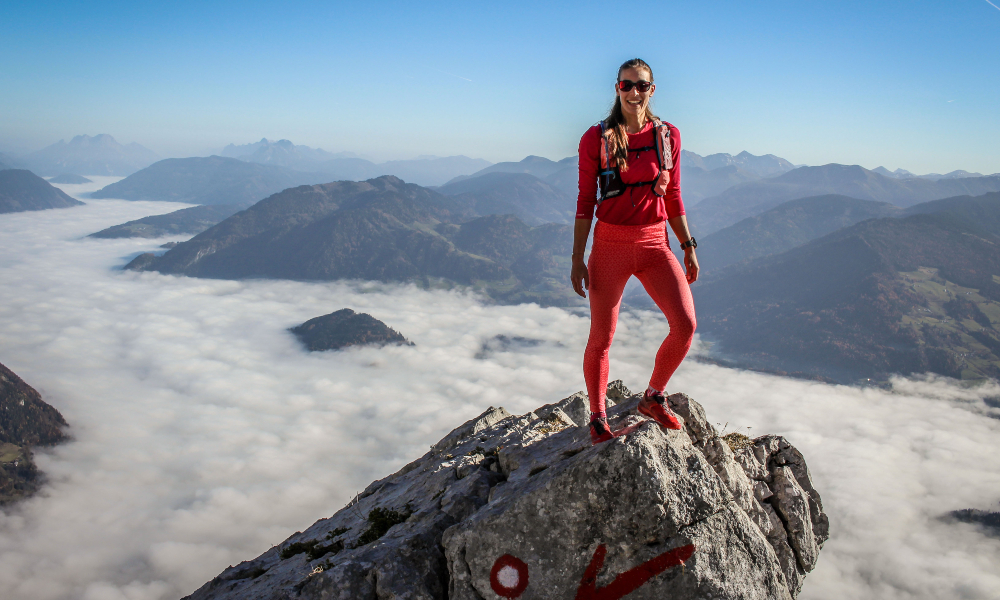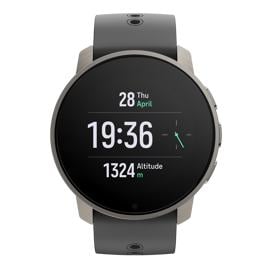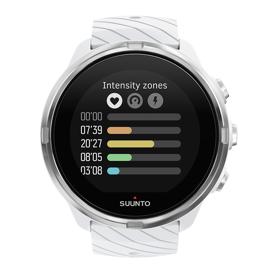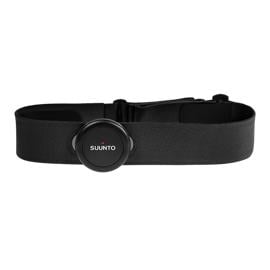The Austrian management guru Peter F. Drucker said it well: “Unless commitment is made, there are only promises and hopes; but no plans.”
Put another way, without a clear plan, there’s no real commitment. It’s the same with training. We need a goal and a plan to reach it. Otherwise, the risk is we keep on doing the same old thing. If we do aim to improve our performance, we must know where we’re going and how to get there.
“A training plan doesn’t have to start directly at the beginning of a year, but it’s a good time for making plans and setting new goals,” says Austrian sport scientist, coach and athlete Susi Kraft.
Susi is one half of the Berghasen, an awesome German-language blog covering everything you need to know about ski touring: training tips, tours, gear and so on. We caught up with the passionate mountain lover and asked what goes into a good training plan. Read on for Susi’s six tips.

Susi works and plays in the stunning mountains around Salzburg. © Berghasen
Take the long view
You might be wondering whether you really need to have a plan for the whole year. The answer is yes if you want to have an optimal training year and achieve your goals. Susi explains why:
“When designing a training plan you normally define one or two personal highlights in the training year,” she says. “At those events your physical performance should be at the highest level.”
Once the highlights are decided you then distribute every single workout/training session across your calendar. Sport scientists like Susi call this process training periodization, which has three phases:
1. Base period
2. Pre-competition period
3. Competition period
“A smart training periodization is only possible if you have an overview of the whole year and the athlete highlights factored in,” Susi says. “Besides that you also have to factor in your personal life, like family, holidays, work, weddings, kids and so on.”
Select your highlights
Without a goal, it’s easy to lose direction. When thinking about your next goal, use the acronym as a guide, SMART: specific, measurable, achievable, realistic and timely.
Specific: Well defined, clear, and unambiguous
Measurable: With specific criteria that measure your progress toward the accomplishment of the goal
Achievable: Attainable and not impossible to achieve
Realistic: Within reach, realistic, and relevant to your life purpose
Timely: With a clearly defined timeline, including a starting date and a target date. The purpose is to create urgency.
“The training plan itself should always be orientated around a goal you want to achieve,” Susi says. “That goal could be a trail running competition, finishing your first triathlon, climbing Mont Blanc or losing weight. Setting new goals and working with a specific training plan keeps motivation high. That’s what I see when working with my athletes.”
Consider this
“The no pain, no gain approach to training is really outdated, “ Susi says. “30 years ago experts in sports science didn’t always know how to train right. What we know now is that the best endurance athletes don’t train so hard – most of their training is at low intensity.”
Take a moment to think about that before creating a plan to achieve your goal. This is especially important if you have a tendency to push yourself hard. A gentler approach may serve you better.
“A lot of people I see try to get better really fast,” Susi says. “They train really hard, really long distances. You may get better quickly, but in the long term that’s really bad for the body and for the training programme. Some people actually get worse, become overtrained or are prone to injuries.”
Don’t copy and paste
Oh, the internet. We can find countless training plans and make them our own. Thing is, cutting corners like that might not give you the results you wish for.
“If you just copy last year’s or someone else’s training plan it won’t account for possible improvements in your training status,” Susi says. “Your plan should always be built on your current endurance, strength and other skills. That’s why it is so important to do performance diagnostics regularly and before you start working with a new training plan or coach.”
Avoid these classic mistakes
Susi says people tend to fall into two camps. Those that go overboard and do too much high intensity training too soon, and those that like routine and do the same workouts every week.
“Really think about intensity distribution in your plan,” Susi says. “The risk is, that you do the same stuff every week. That mistake may lead to slower progress, monotony or even overtraining because you didn’t consider rest day and rest weeks. Most people tend to train too hard over several weeks or months. Over a whole year this may lead to chronic exhaustion.”
Don’t be that guy.
Follow this planning flow
- Set goals / highlights
- Analyze your current physical status – endurance, strength, stability, speed, balance – by doing physical performance tests. The outcome is influenced by your training history. Also consider how much experience a person has and determine your training age, meaning how many years of endurance training, strength training you’ve done and how many years of specific training in the sport you want to compete in.
- How often and what exactly is your training programme (hours, km, what kind of sports etc.)
- Which weaknesses do you have? What are the main factors we need to approve?
- How much time do you have to achieve your goal?
- Determine the training periodization over the time window you have available.
- Carefully and realistically distribute the training intensity across the calendar
- Plan single blocks or training sessions
Lead images: © Berghasen







